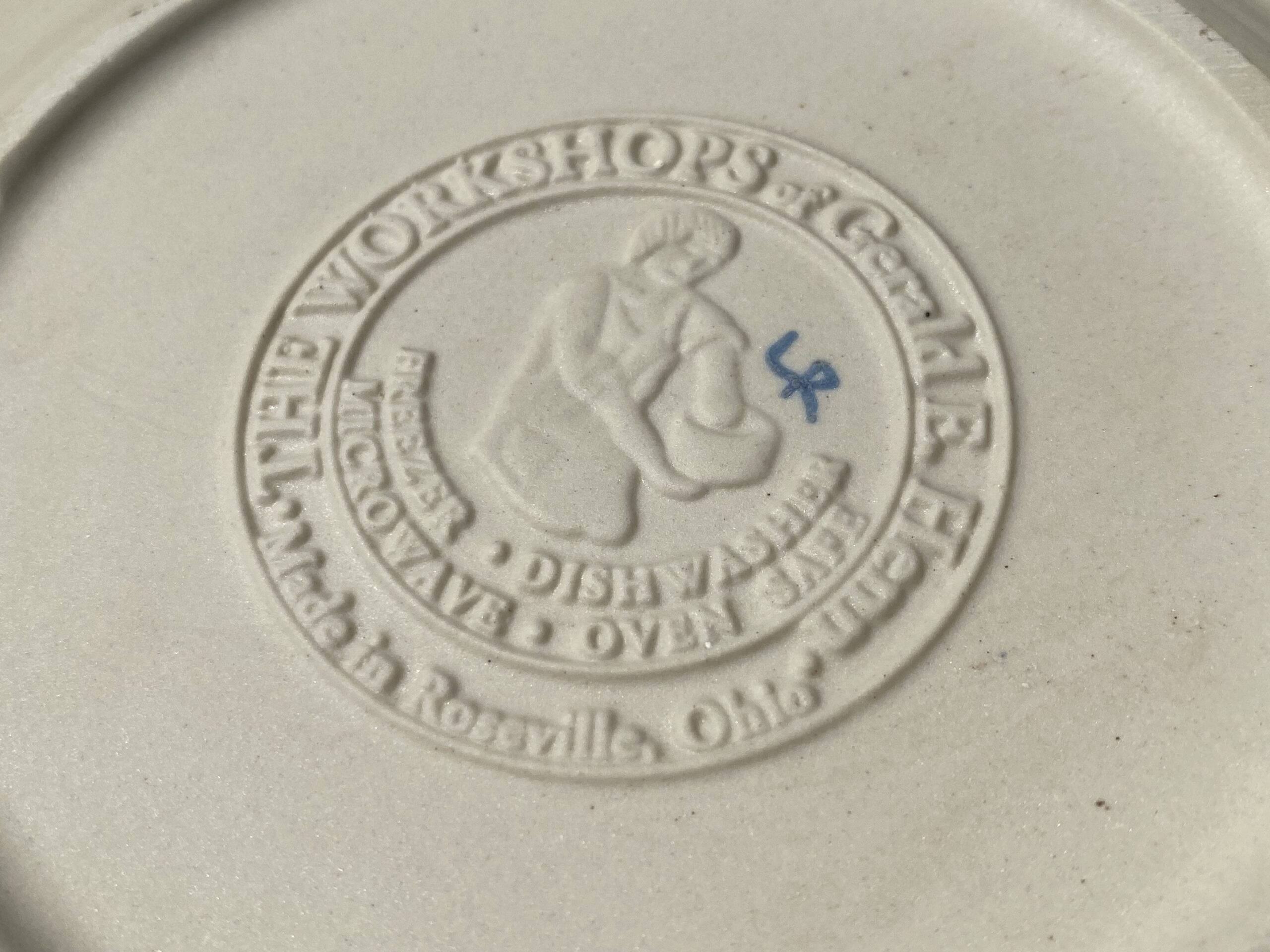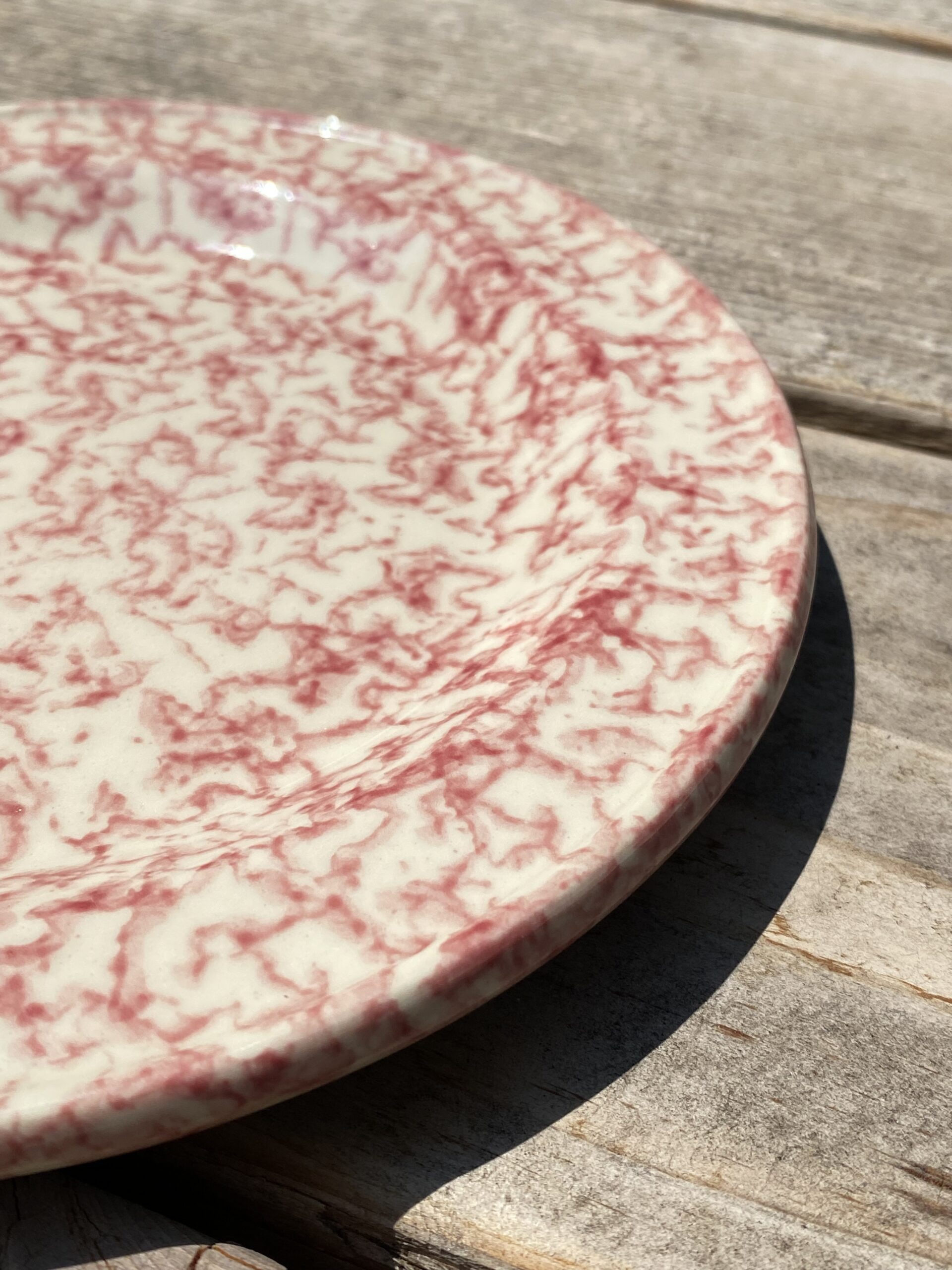XRF test results for pink and white glazed Gerald Henn Workshops Spongeware pottery dish (Made in Roseville, Ohio in late-1980s) — sent in by Lynn in Texas
For those new to this website:
Tamara Rubin is a multiple-Federal-award-winning independent advocate for childhood Lead-poisoning prevention and consumer goods safety, and a documentary filmmaker. She is also a mother of Lead-poisoned children (two of her sons were acutely Lead-poisoned in 2005). Since 2009, Tamara has been using XRF technology (a scientific method used by the U.S. Consumer Product Safety Commission) to test consumer goods for toxicants (specifically heavy metals — including Lead, Cadmium, Mercury, Antimony, and Arsenic). All test results reported on this website are science-based, accurate, and replicable. Items are tested multiple times to confirm the test results for each component tested. Tamara’s work was featured in Consumer Reports Magazine in February of 2023 (March 2023 print edition).
Published: July 19, 2023
Wednesday
Below are full XRF test results for the Gerald Henn Workshops Spongeware dish pictured above (additional photos below as well).
For context: the amount of Lead considered unsafe in the glaze, paint, or coating of an item intended for use by children is anything over 90 ppm Lead. This dish tested positive for more than 1,300 ppm Lead on the glazed food surface, and more than 1,500 ppm Lead on the unglazed back of the dish. Newly manufactured Items intended for use by children (made after 2008) must also test below 100 ppm Lead in the substrate to be legal if manufactured today.
Absent destructive testing, given the substrate (base clay) of this dish tested positive for such a high level of Lead, it is not possible to know if the glaze is Lead-free (and the Lead-reading by the XRF instrument on the glazed surface is a diluted reading of the base ceramic below) or if both the glaze and the substrate are positive for unsafe levels of Lead independently. In any case, it is extremely rare/extremely unusual for the base clay of dishware to test positive for such high levels of Lead (most ceramic substrates test positive for Lead in the range of 40 to 100 ppm and rarely any higher than 200 ppm Lead).
Dishes are not considered (by the United States Federal government) to be items intended for use by children. Items intended for use by adults are not regulated for total Lead content (as detectable with an XRF instrument). As a result, this dish would not be considered illegal in any way — even if it were manufactured and sold today. Regardless of relevant/applicable federal standards, out of an abundance of caution, I would not use these dishes for food-use purposes given the high levels of Lead found in both the glazed and unglazed sides of the dish.
Reading #1) Pink & White Center of Food Surface of the Dish
90-second test (repeated multiple times to confirm results)
- Lead (Pb): 1,348 +/- 46 ppm
- Cadmium (Cd): non-detect / negative
- Tin (Sn): 663 +/- 22 ppm
- Mercury (Hg): non-detect / negative
- Selenium (Se): non-detect / negative
- Barium (Ba): 238 +/- 33 ppm
- Arsenic (As): non-detect / negative
- Chromium (Cr): non-detect / negative
- Antimony (Sb): non-detect / negative
- Nickel (Ni): 197 +/- 54 ppm
- Copper (Cu): 97 +/- 26 ppm
- Zinc (Zn): 496 +/- 34 ppm
- Manganese (Mn): non-detect / negative
- Titanium (Ti): non-detect / negative
- Bromine (Br): 7 +/- 3 ppm
- Zirconium (Zr): 4.435 +/- 95 ppm
- Niobium (Nb): non-detect / negative
- Molybdenum (Mo): non-detect / negative
- Iron (Fe): 1,560 +/- 146 ppm
- Platinum (Pt): non-detect / negative
- Cobalt (Co): non-detect / negative
- Bismuth (Bi): 101 +/- 14 ppm
- Indium (In): non-detect / negative
- Chlorine (Cl): non-detect / negative
- No other metals were detected in consumer goods mode.
Reading #2) Unglazed Back of the Dish
60-second test (repeated multiple times to confirm results)
- Lead (Pb): 1,447 +/- 43 ppm
- Cadmium (Cd): non-detect / negative
- Tin (Sn): 22 +/- 7 ppm
- Mercury (Hg): non-detect / negative
- Selenium (Se): non-detect / negative
- Barium (Ba): 102 +/- 25 ppm
- Arsenic (As): non-detect / negative
- Chromium (Cr): non-detect / negative
- Antimony (Sb): non-detect / negative
- Nickel (Ni): non-detect / negative
- Copper (Cu): non-detect / negative
- Zinc (Zn): 23 +/- 11 ppm
- Manganese (Mn): non-detect / negative
- Titanium (Ti): 1,616 +/- 995 ppm
- Bromine (Br): non-detect / negative
- Zirconium (Zr): non-detect / negative
- Niobium (Nb): non-detect / negative
- Molybdenum (Mo): non-detect / negative
- Iron (Fe): 3,091 +/- 171 ppm
- Platinum (Pt): 60 +/- 29 ppm
- Cobalt (Co): non-detect / negative
- Bismuth (Bi): non-detect / negative
- Indium (In): non-detect / negative
- Chlorine (Cl): non-detect / negative
- No other metals were detected in consumer goods mode.
To see more products we’ve tested, please check out the “Menu” of this website.
~ End ~



Never Miss an Important Article Again!
Join our Email List
















Have you tested the blue version of these?
I am interested in the blue and green spongeware also. Thx.
What do you think happened/or is happening to the employees that worked in these pottery factories where heavy metals were in use every day?
So sad.
Yikes thank you for sharing. I’ve been using the blue sponge ones since I was a kid & was happy to get them passed down to me..29 now & just baked apples on it yesterday in my toaster oven. I had 2 broken ones saved so I could repair them. Tossing them all out now. I have a blue plate I can send you that currently has a slice of carrot cake on it (cleaned of course)
Thank you for commenting. I’m glad you found this!
T
Wow! I have the beige and green drnking glasses, coffee cups and a few bowls from Henn. I will purge these as well as the Pioneer Woman dishes. I have Longaberger dishes beige with the green logo more than likely they are bad as well. Thank you for sharing your knowledge.